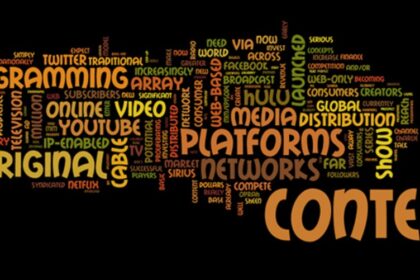
I find people consuming content at all places and times…Whether it’s on a flight or in the local train or by my daughters or the elders in my family…Whether I am in Mumbai, Nagpur, Cochin or in Puvathussery (My wife’s native village in Kerala) the consumption pattern remains the same…It’s the same whether it’s the idling rickshaw, the taxi driver, the local bakery or shop keeper or the working executives the consumption pattern is the same
The same is the case with content creation…With everyone having access to smart phones the amount of local videos and pictures that everyone creates in a day is unbelievable…Whether these are shared at a personal level or in groups or come to social media platforms or to video sharing platforms these are all content getting created…
I remember during the last year floods in Kerala the amount of locally created videos which came up in WhatsApp groups and in social platforms were unbelievable. In fact the content so created was way ahead of the content available in traditional video channels like TVs that some of these locally created videos did make it to the various news channels too…
What is driving this creation and consumption? Let’s look at some numbers for better understanding
1. Mobile internet consumption in India has grown from 20cr GB per month in 2016 to 370 cr GB in 2018
2. Internet users in India have grown from 260mn in 2015 to 627mn in 2019
3. 3.Time spend by Indian watching videos has grown from 2min per day in 2012 to close to 67minutes in 2019
4. You Tube is the top video streaming app in India with an average daily time spend of 1hour and 11 minutes daily
5. 200 You Tube creators in India with over 1mn subscribers
6. You Tube viewership in regional languages has grown from 12.7bn views in 2016 to 67.4mn in Telugu, from 8.2 bn views to 45.5 in Tamil,4.4 bn to 30 bn in Punjabi and from 2.5 bn to 31.4 bn in Bhojpuri
So, what is driving this huge video consumption and creation…
· Drop in data prices from about Rs 250 per Gb a few years back to close to Rs 10 in 2019
· Voice search option in streaming services like You Tube
· Regional content and search options…You Tube home page is now available in 10 languages
So how does all this change the viewing pattern of the viewers?
1. Intentional Media to Interstitial Media
Intentional Media are the handful of offerings that we plan in advance to experience and then carve out particular chunks of time to enjoy normally watched in traditional Tvs whereas Interstitial Media… is programming we use to fill the spaces in our lives — 10 minutes in a grocery store line… or 35 minutes on a train or bus.
You pay the same amount of attention to both types of content, but the intensity of your attention varies due to the differing consumption modes.
In addition, the intentional media and interstitial media also keeps changing from person to person depending on their interests
What this is leading to is to continuous dilution of long-form premium content for media like sports matches and prestige dramas down to size to become easily digestible Interstitial Media to cater to the newly formed audiences
2. Interactive Media.
While this has been talked about and tried for a while the growth of internet penetration could finally lead to the creation of Interactive Media which could lead to infinite possibilities on each frame leading to the creation of personalised content
3.The rise and rise of stories.
Stories, a vertical media format pioneered by Snapchat and popularized by Instagram, is the first true mobile-native format. Before that, all media formats on mobile were essentially transplants from existing media platforms tweaked into fitting the mobile screen. In contrast, stories are unapologetically mobile, with its insistence on vertical videos, finger doodles, AR filters, and, above all else, a sense of of-the-moment authenticity.
Naturally, as more and more media consumption move towards mobile, it is starting to take over our collective attention, Facebook Stories has announced a 150 million daily active user base while Instagram Stories has over 300 million daily users as of November 2017. Facebook revealed at its F8 conference in May that stories across its properties will soon garner more impressions than News Feed posts as they grew 15 times faster than feeds from Q2 2016 to Q3 2017.
The success stories of You tube stars like Info bells 38 million subscribers and annual revenue of Rs 10cr or Village food factory in Tamil with 3.1 million subscribers and about Rs 1.2 crores will lead to more and more people chasing their dreams on these mediums
But for me today we do not have a search option or an app or a remote which helps you scan all mediums of the web for the video content that you want to watch from Facebook to WhatsApp to YouTube and even OTT platforms or Google…
The moment this option gets created it will totally disrupt content consumption as we have known till now…



